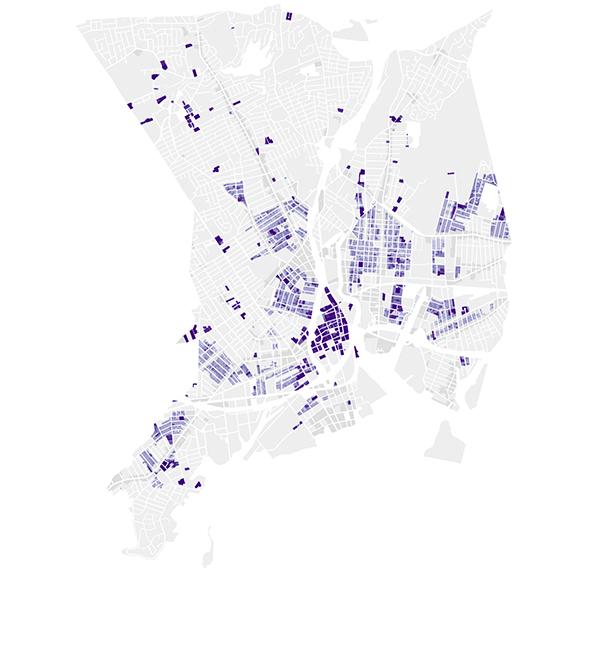
A spatial analysis of the elimination of local parking mandates, when all other regulations remain constant.
The Legal Constructs Lab is supporting the visualization of the extent to which minimum parking mandates constrain housing production.
In the early twentieth century, the architect Frank Lloyd Wright wrote, “The outcome of the cities will depend on the race between the automobile and the elevator, and anyone who bets on the elevator is crazy.” Subsequent developments in the postwar period rendered Wright’s insight prophetic. Studies of major American cities in the postwar period found that upward of 40% of acreage in urban cores was devoted to paved streets and parking lots for cars. This allocation of space was not only driven by private actors, but affirmatively mandated by public regulation, including zoning mandates that new construction include a certain number of parking spaces per residential unit or per square footage.
Today, zoning’s parking mandates are often pilloried by progressive planners. Yet no research has been done to show how parking mandates physically affect housing unit creation across multiple jurisdiction. This article, to be co-authored with Ilya Ilyankou, will use the research underlying the Connecticut Zoning Atlas to illustrate visually how much parking constrains housing supply across a dozen towns. Preliminary analysis shows that lifting parking mandates can produce hundreds of thousands of new housing units statewide.


